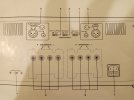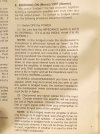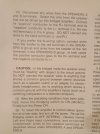Lads, this may or may not have been discussed here or elsewhere but I have shifted through a copious amount of write-ups to YT vids but still remain confused.
I have a pair of floorstanders and was thinking if I can connect one power amp(250w RMS/ch into 8 Ohms) to the left speaker and the other power amp to the right speaker. In other words, each speaker will be driven by one power amp in a setup which would see the 2 power amps connected(RCA) from the pre-out jacks of a stereo amp.
The speakers only take a single end connection. Bi-wiring is definitely out of the equation. The power amp allows bridging.
Speakers- Focal Chorus 816v
Power Amplifier - NAD 208
Stereo Amplifier/streamer DAC - Primare i15
I have attached a picture of the back panel of the amp.
Thanks a bunch lads!
I have a pair of floorstanders and was thinking if I can connect one power amp(250w RMS/ch into 8 Ohms) to the left speaker and the other power amp to the right speaker. In other words, each speaker will be driven by one power amp in a setup which would see the 2 power amps connected(RCA) from the pre-out jacks of a stereo amp.
The speakers only take a single end connection. Bi-wiring is definitely out of the equation. The power amp allows bridging.
Speakers- Focal Chorus 816v
Power Amplifier - NAD 208
Stereo Amplifier/streamer DAC - Primare i15
I have attached a picture of the back panel of the amp.
Thanks a bunch lads!



